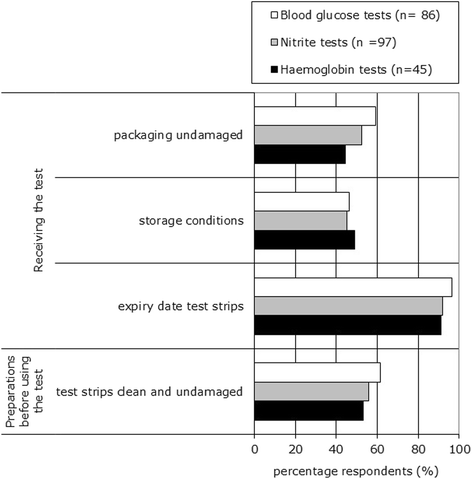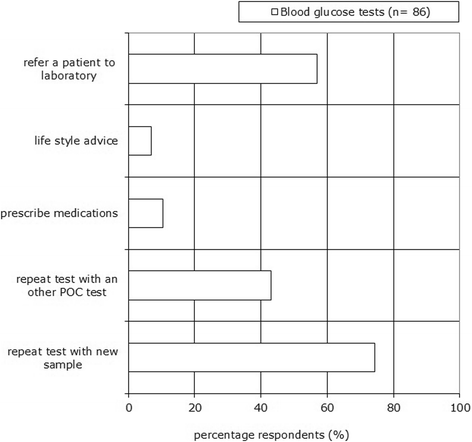Results of a survey among GP practices on how they manage patient safety aspects related to point-of-care testing in every day practice
- PMID: 25648985
- PMCID: PMC4332919
- DOI: 10.1186/s12875-014-0217-2
Results of a survey among GP practices on how they manage patient safety aspects related to point-of-care testing in every day practice
Abstract
Background: Point-of-care (POC) tests are devices or test strips that can be used near or at the site where care is delivered to patients, enabling a relatively fast diagnosis. Although many general practitioners (GPs) in the Netherlands are using POC tests in their practice, little is known on how they manage the corresponding patient safety aspects.
Methods: To obtain information on this aspect, an invitation to participate in a web-based questionnaire was sent to a random sample of 750 GP practices. Of this sample 111 GP practices returned a complete questionnaire. Data was analysed by using descriptive statistics.
Results: Results show that there is not always attention for quality control measures such as checking storage conditions, executing calibration, and maintenance. In addition, universal hygienic measures, such as washing hands before taking a blood sample, are not always followed. Refresher courses on the use of POC tests are hardly organized. Only a few of the GPs contact the manufacturer of the device when a device failure occurs. Well-controlled aspects include patient identification and actions taken when ambiguous test results are obtained.
Conclusions: We observed a number of risks for errors with POC tests in GP practices that may be reduced by proper training of personnel, introduction of standard operating procedures and measures for quality control and improved hygiene. To encourage proper use of POCT in general practices, a national POCT guideline, dedicated to primary care and in line with ISO standards, should be introduced.
Figures




References
-
- Kleinveld HA, De Jong KM, Oosterhuis WP, Raijmakers MTM. Support Point-of-Care Testing in first line care. Ned Tijdschr Klin Chem Lab Geneeskd. 2011;36(1):37–38.
-
- Netherlands Society for Clinical Chemistry and Laboratory Medicine: Rapportage Actiecomité Glucosemeters. [http://www.nvkc.nl/scripts/actueel/Documents/Rapportage%20Actiecomit%C3%...].
MeSH terms
LinkOut - more resources
Full Text Sources
Other Literature Sources
Medical

